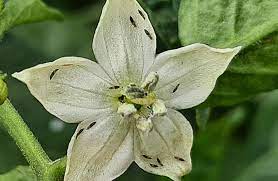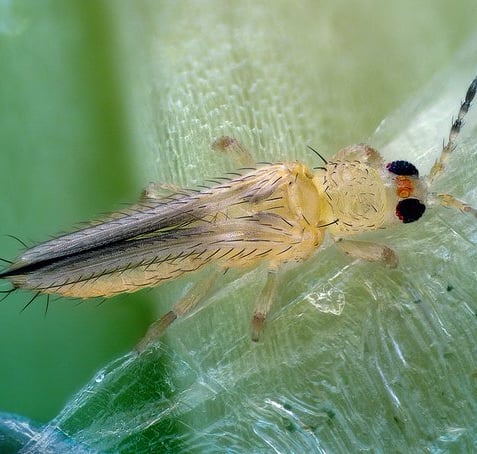Invasive pest, Thrips parvispinus (Karny) (Thysanoptera: Thripidae)
Thrips parvispinus (Karny) (Thysanoptera: Terebrantia: Thripidae) is a one of notoriously destructive and invasive cosmopolitan pest species
Thrips (order Thysanoptera) are minute, slender insects with fringed wings and unique asymmetrical mouthparts. Different thrips species feed mostly on plants by puncturing and sucking up the contents, although a few are predators.
Entomologists have described approximately 6,000 species. They fly only weakly and their feathery wings are unsuitable for conventional flight; instead, thrips exploit an unusual mechanism, clap and fling, to create lift using an unsteady circulation pattern with transient vortices near the wings.
Many thrips species are pests of commercially important crops. A few species serve as vectors for over 20 viruses that cause plant disease, especially the Tospoviruses. Some species of thrips are beneficial as pollinators or as predators of other insects or mites.
Thrips parvispinus (Karny) (Thysanop-tera: Terebrantia: Thripidae) is a one of notoriously destructive and invasive cosmopolitan pest species and has been reported from Thailand to Australia and Europe. The last two decades witnessed a drastic extension in the geographic distribution of Thrips parvispinus and it is now known to occur in France, Greece, Hawaii, Mauritius, Reunion, Spain, Tanzania and the Netherlands, besides India. It is a polyphagous species and has been reported on infesting beans, chilli, eggplant, papaya, pepper, potato, shallot, strawberry and tobacco.
Thrips parvispinus is recorded on agriculturally important crops after its first report from India. Since 2015, this species has been collected from nine host plants belonging to seven families from five Indian states, viz. Andhra Pradesh, Chhattisgarh, Karnataka, Kerala and Tamil Nadu. The establishment of this thrips species warrants special attention in India as it is a potentially damaging plant pest and has a wide host range across various plant families. Unless successful quarantine measures are put in place, the spread and subsequent depredations of cultivated crops is inevitable.
The Thrips parvispinus cause large scale shedding of flowers, malformation of fruits and fruit drop in chillies, leading to severe yield loss. Severe damage was recorded in Andhra Pradesh, Chhattisgarh and Karnataka on Capsicum annuum and in Tamil Nadu on Mangifera indica. Surveys were conducted in major chilli growing regions (nine districts) of Karnataka, India to assess the outbreak of thrips during November – December, 2021. The predominant thrips species identified in the surveyed fields was Thrips parvispinus, mainly observed on flowers, flower buds and leaves. In the surveyed areas, more than 75% of the chilli was infested by T. parvispinus that resulted in loss of more than 85% of the crop yield. Despite repeated applications of the insecticides, control failures were noticed, farmers were forced to abandon the crop.
Establishment of T. parvispinus in different states of India demands a special attention as a major pest inflicting severe crop losses. Although not currently reported to be a vector of Tospoviruses, it may likely acquire viruliferous trait.
Our AI3GENICS ( Artificially Intelligent 3rd generation Insect communication System) based insect-pest control device; under development phase; shown quite positive results during primary field experiments in chilli (hot pepper). This device become able to control over 90% damage to the chilli crop by controlling the population of T. parvispinus.




Photograph by Manfred R. Ulitzka









